Called the « Blue Pearl » because of its water purity, the Khövsgöl lake (in mongolian : ᠺᠥᠪᠰᠦᠭᠦᠯ) is a sacred place for the local people, which they call « Mother ». The below pictures were taken at summer time, during a several weeks horse ride on the lakeside. More than a view on the lake, these photos show also the local inhabitants met during this trip.
Location of the Khövsgöl lake
The Khövsgöl lake is located in the north of the country, near the Russian border, in the eponymous province : The « aïmag de Khövsgöl » (in cyrillic mongolian : Хөвсгөл аймаг). The population density in this province is only 1,2 inhab./km2 (the average in Mongolia is about 1,7 inhab./km2)
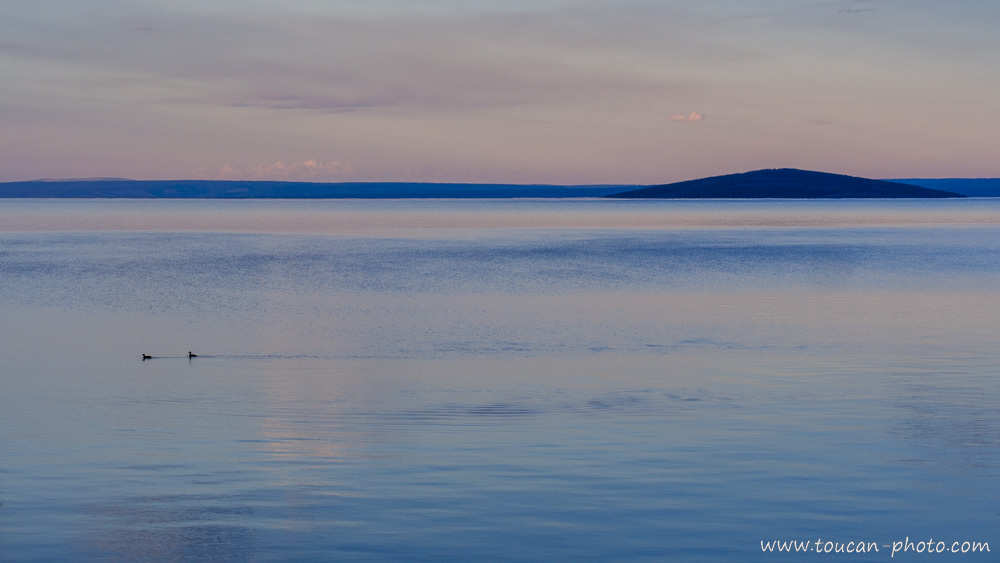 View on the Khövsgöl lake
View on the Khövsgöl lake
The Khövsgöl lake has a lenght of 136km, a width of 36km and its deepest point is at 262meters. Which makes it the second-most widest and the deepest lake in Mongolia. This lake holds almost 70% of Mongolia’s fresh water and its volum of 480 km² makes it the 19th biggest lake in the world.
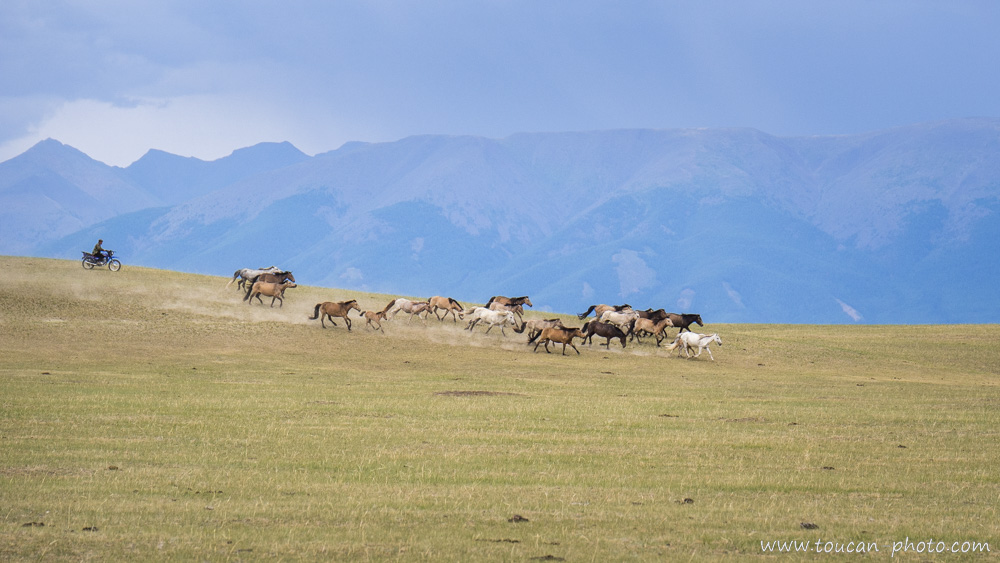 Pursuit in the steppe
Pursuit in the steppe
A Darkhad rider (a mongolian ethnic group living in the area) bringing together a herd of horses. As him, today, more and more horse riders prefer to use motorbikes for some tasks as to follow the herd.
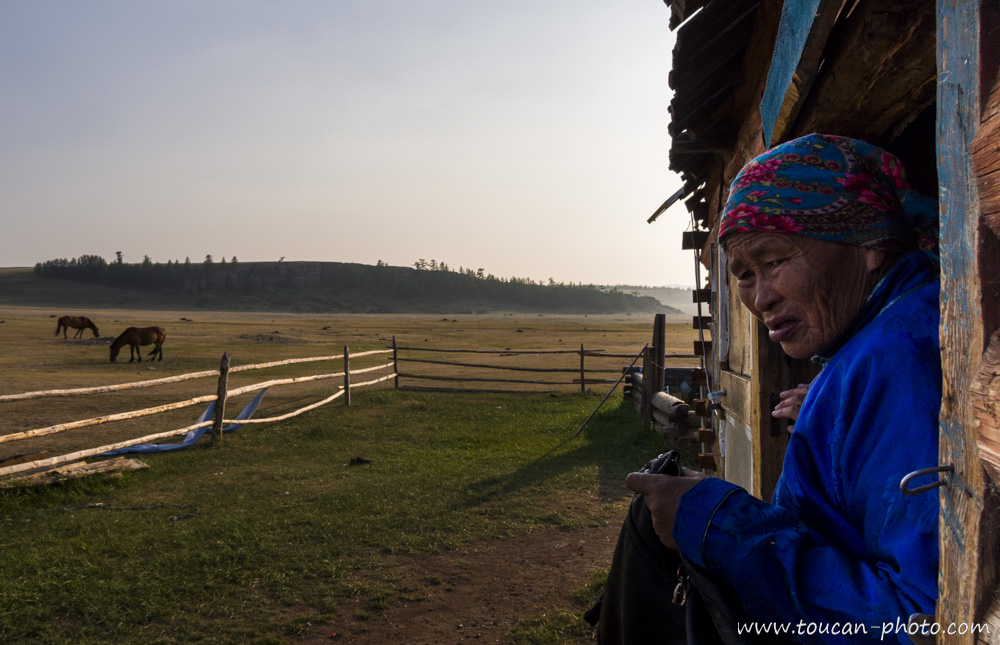
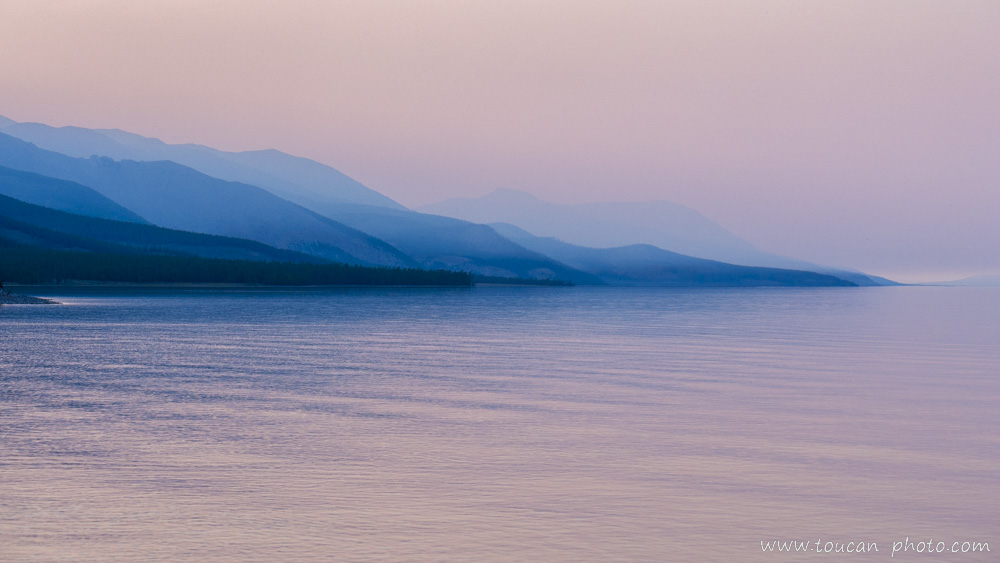 A sunset view on Delgerkhaan, the mountain range located on the west side of the Khövsgöl nuur
A sunset view on Delgerkhaan, the mountain range located on the west side of the Khövsgöl nuur
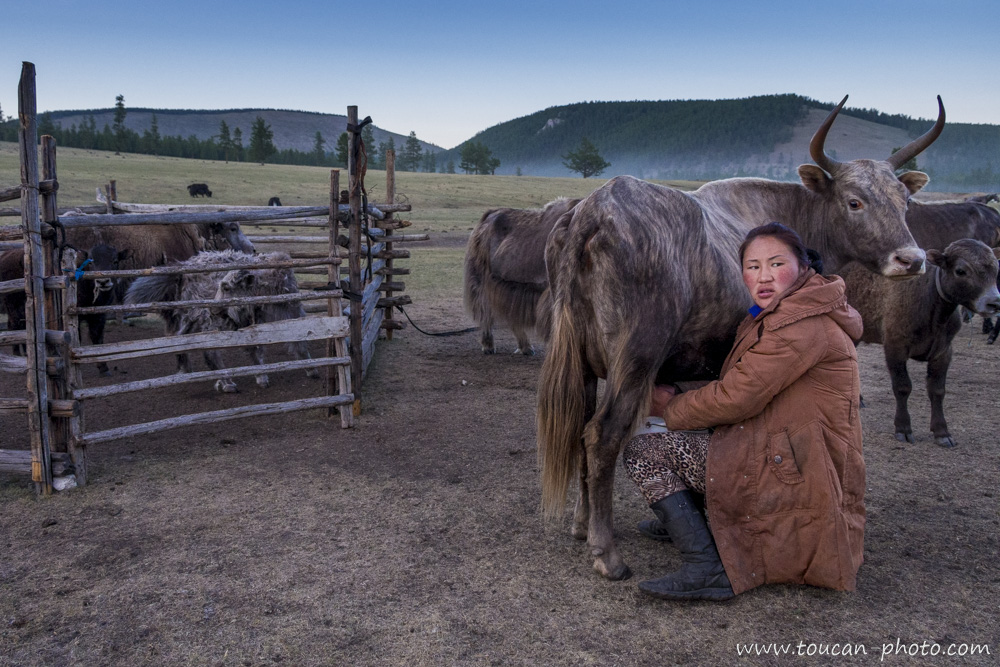 At evening, a sheperdess does the second milking of the day
At evening, a sheperdess does the second milking of the day
Each family breed cows, sheeps, goats and sometimes yaks.
The agriculture is not widespread in Mongolia, only 0,6% of lands are used for agriculture (To compare, it is more than 33% in France (2015).
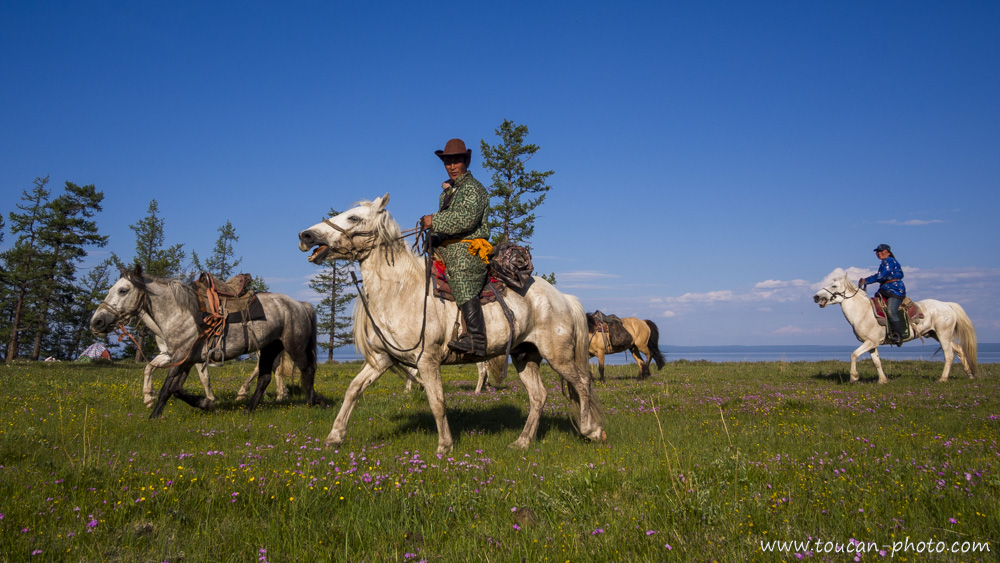 Horse riders on lake side
Horse riders on lake side
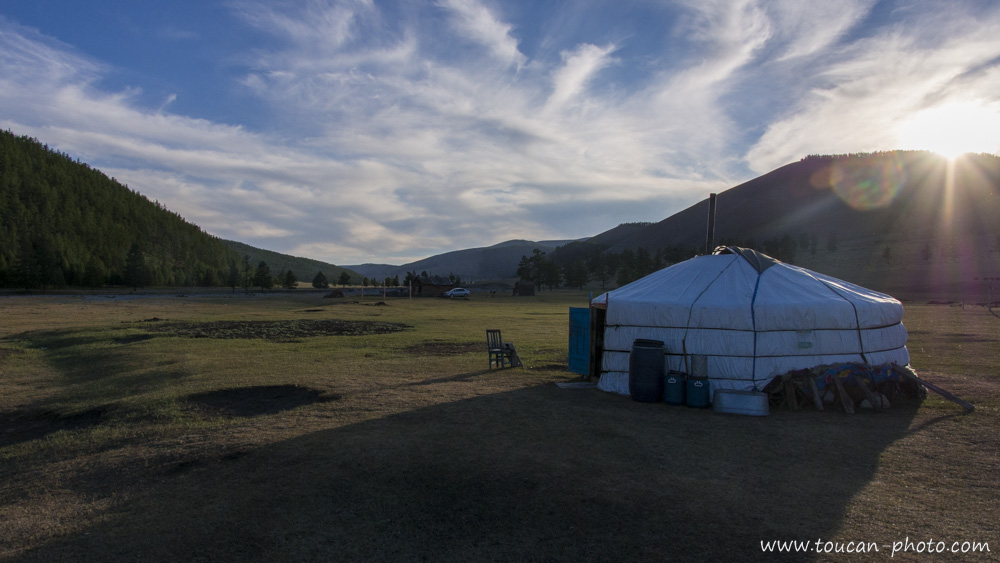 The “Ger”, means “Familly” in Mongolian, it is the traditional mongolian housing
The “Ger”, means “Familly” in Mongolian, it is the traditional mongolian housing
The foreigners wrongly call it a “Yourte”, which is in fact the Russian translation.
A Ger provide a ground surface of 15 to 30 meters square to its inhabitants. Two Mongolians can set up this house in around 45 minutes and disassemble it in 30 minutes.
The structure is made of wood and is covered by felt. Its isolating properties, allow the house to stay fresh in summer and keep a familly warm during winter with the help of a wood, despite the extremely low temperatures.
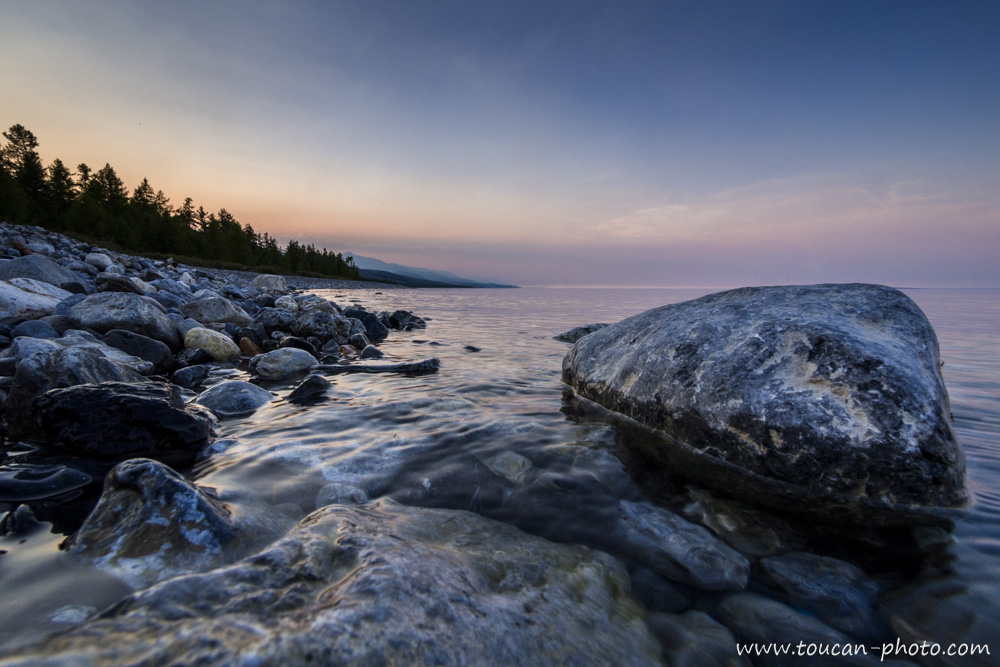 The Khövsgöl bank at sunset
The Khövsgöl bank at sunset
The Khövsgöl lake is a cousin of the Baïkal lake, which is world-famous and located in Siberia, 195 km to the north.
Both lakes were made by the same tectonic shift. The Khövsgöl lake would be from 2 to 5 millions years old.
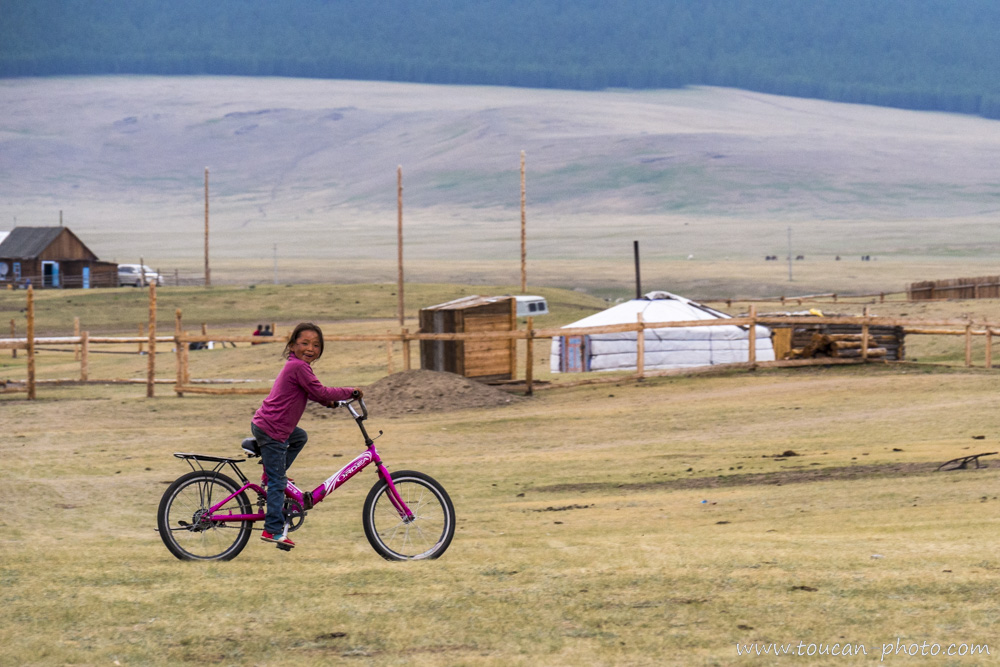 Bicycling in the steppe
Bicycling in the steppe
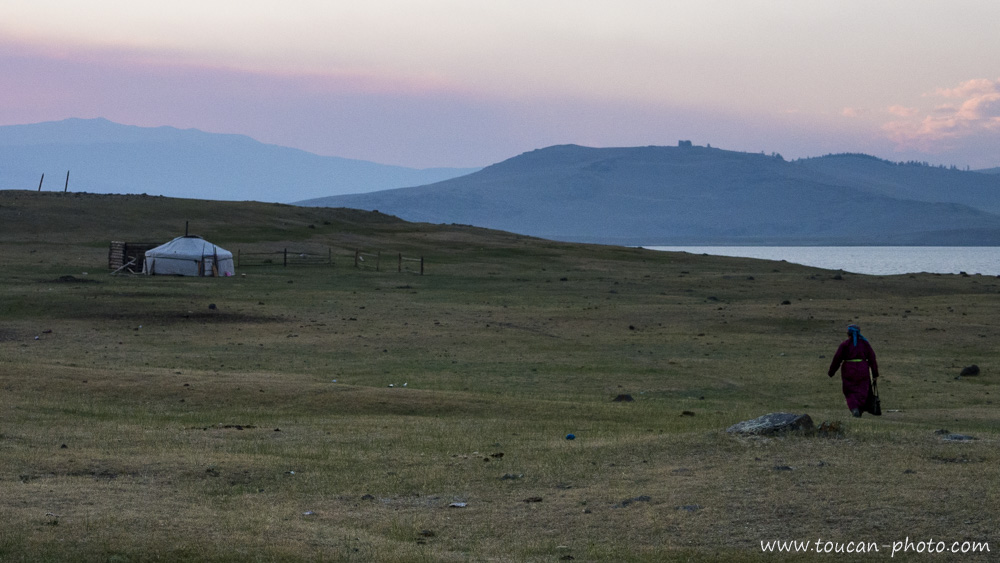
This region is sometimes victime of drought, so the lake Hovsol that provide fresh water to the three main ethnic groups of the region (thee Darkhads, the Bouriates and the Tsaatanes) is considered are sacred by local inhabitants.
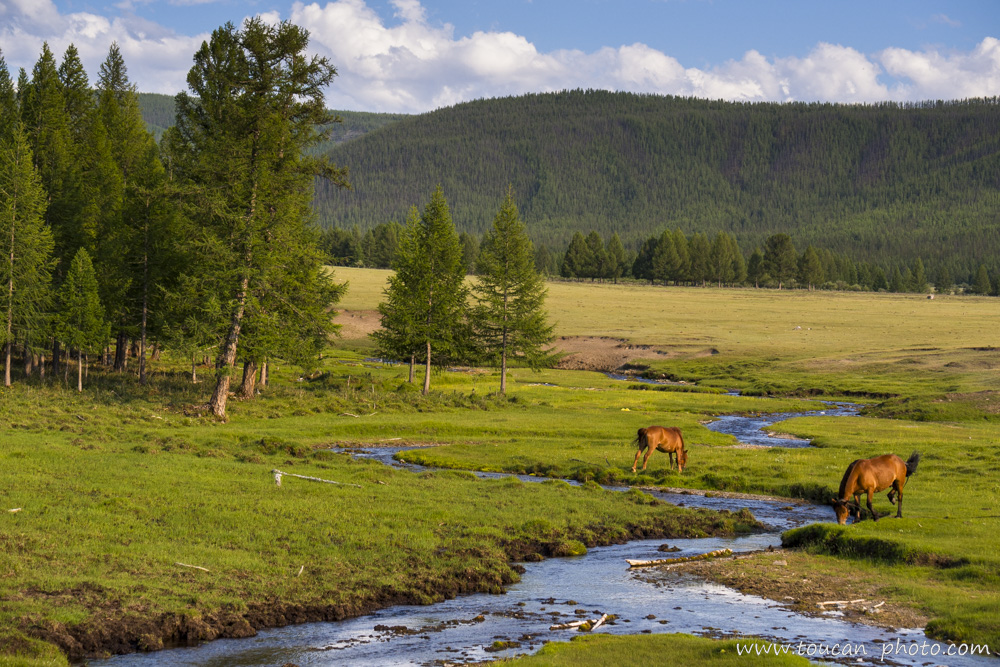
This small stream emerging from the Taïga will merge with one of the 96 riviers which will flow into the Khövsgöl lake. Thus, even if a hundred of rivers flow into the Khövsgöl lake only one goes out, it is the Eg river. It will travel 1000km before it flows into the Baikal lake, in Russia.
The Taïga, that you can see in the background, is the biggest forest in the world (10% of the emerged lands of the world)
This forest is mostly located out of Mongolia, but its edge is at the extrem north of the country near the Khövsgöl lake.
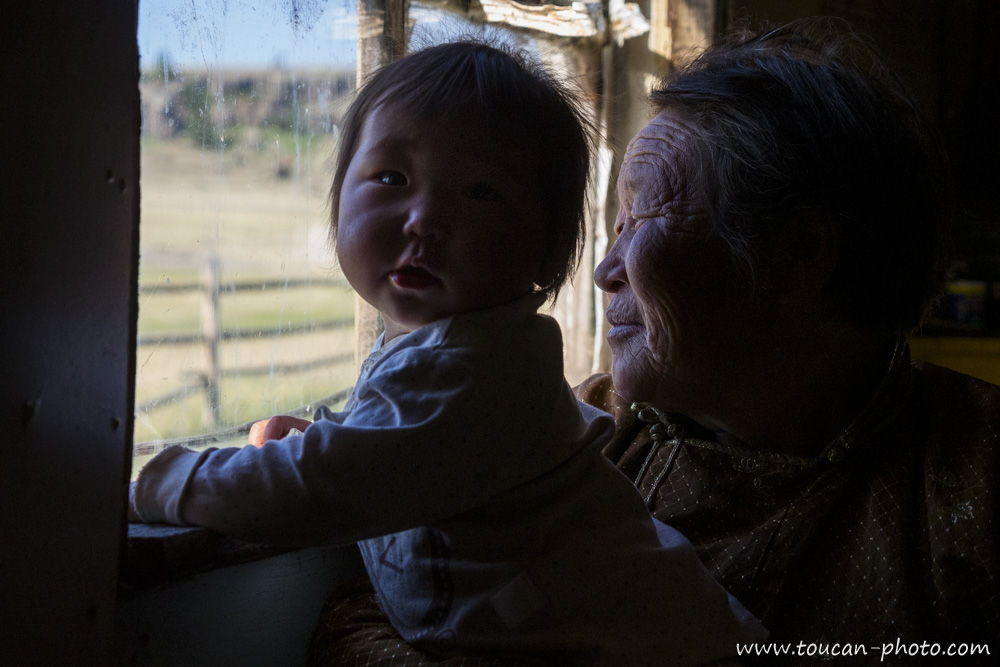 Kushi and her grandma
Kushi and her grandma
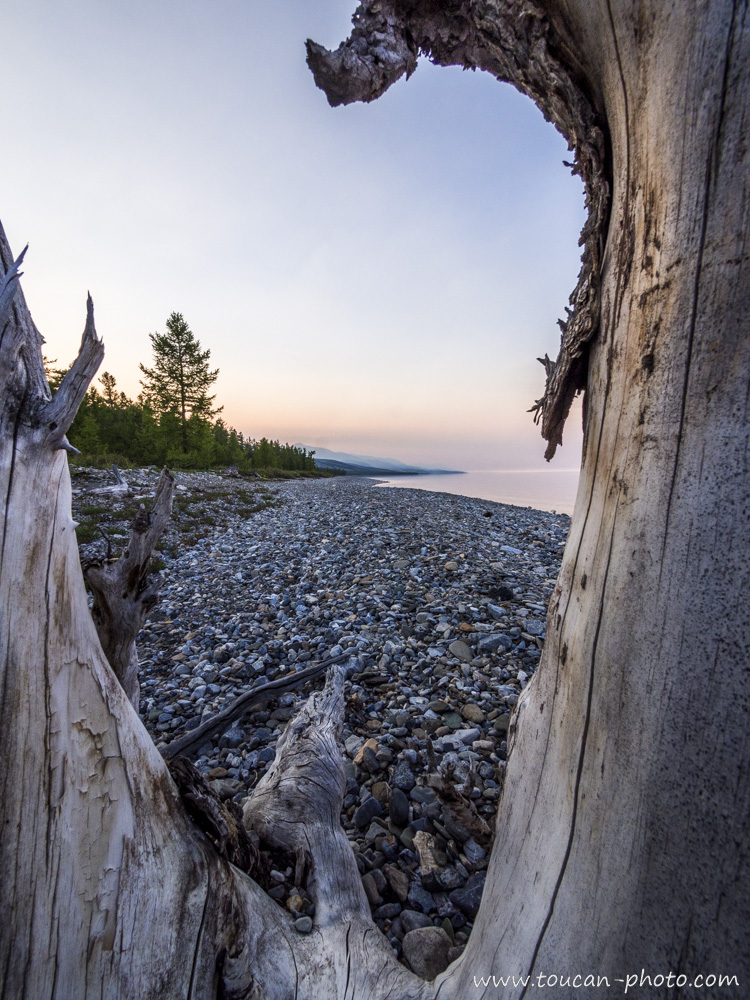 Deadwood on Khövsgöl lake side
Deadwood on Khövsgöl lake side
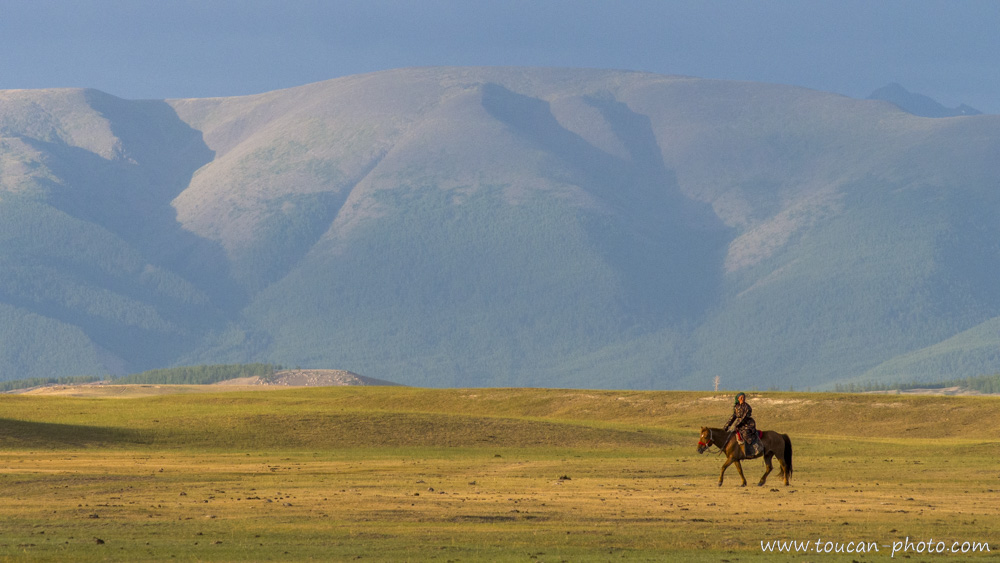 The Darkhad valley (Mongolian: Дархадын хотгор)
The Darkhad valley (Mongolian: Дархадын хотгор)
This mountain range along the west coast of Khövsgöl lake is itself surrounded by the Darkhad valley. It is covered by steppes, which will feed the herds.
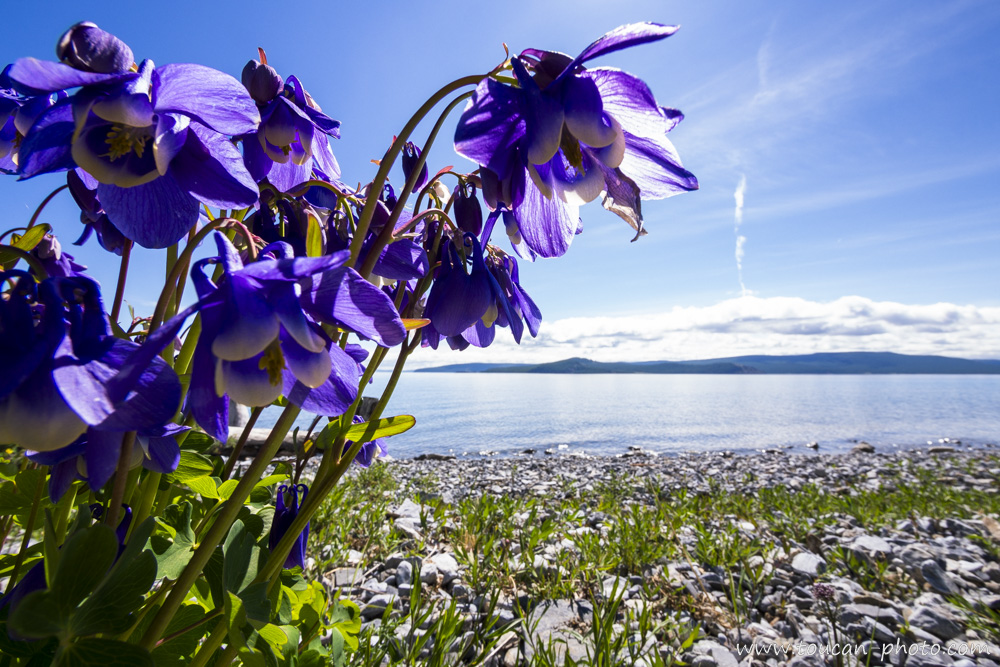 Flower on the lake side. On the second plan, we can see the east lake side. Contrary to the west side that is mountainous, the eastside has a flat landform.
Flower on the lake side. On the second plan, we can see the east lake side. Contrary to the west side that is mountainous, the eastside has a flat landform.
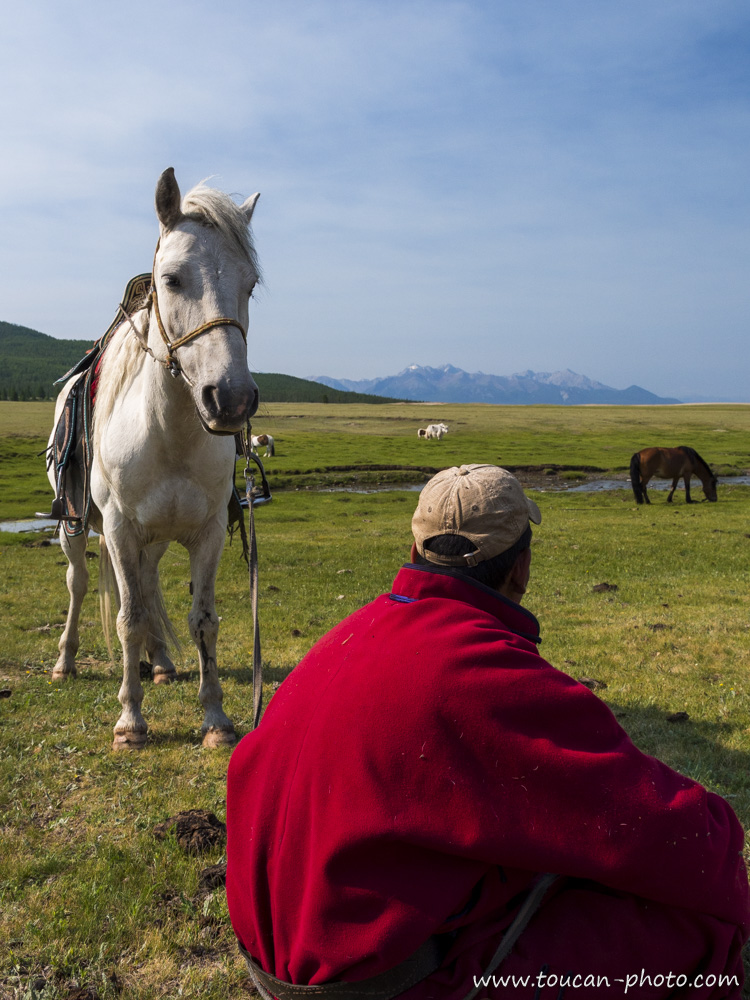 This horse is watching the horse rider, which is watching another horse, the Toucan’s mount.
This horse is watching the horse rider, which is watching another horse, the Toucan’s mount.
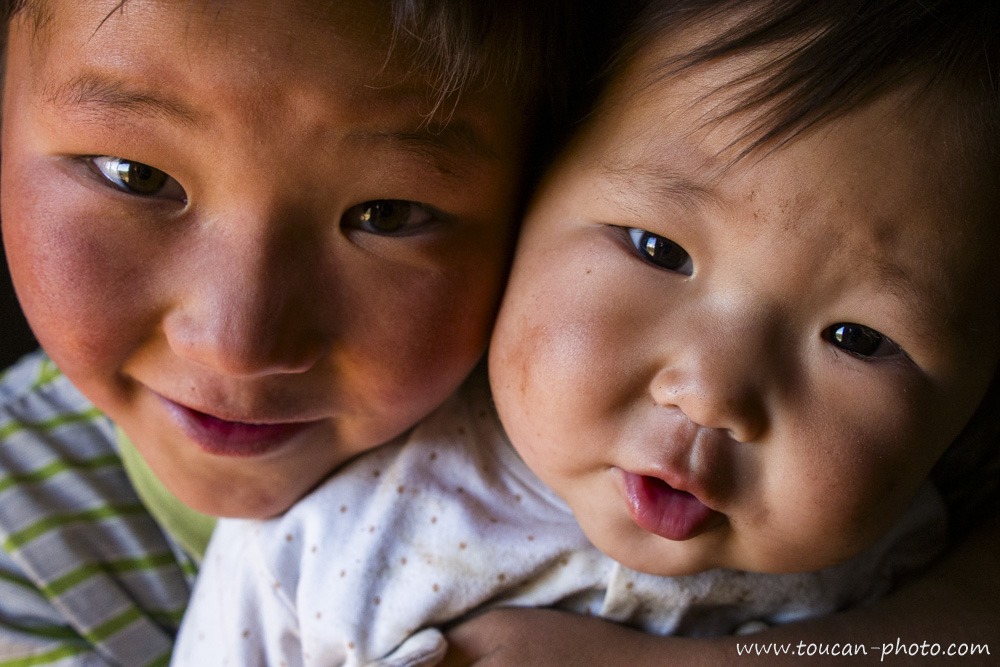 Chuluun (means “Stone”, “Rock”) and his little sister Kushi (means “happy life”)
Chuluun (means “Stone”, “Rock”) and his little sister Kushi (means “happy life”)
In Mongolia, the male surnames are meant to be the expected characteristics by the parents for their child, for example : Bat (Strong), Bold (Steel), Chuluun (Stone) are frequent names for men.
About women, they often have flower names or a quality as a name, as Oyuun (Wisdom), Udval (Chrysanthemum, Narantsetseg (Sunflower), …
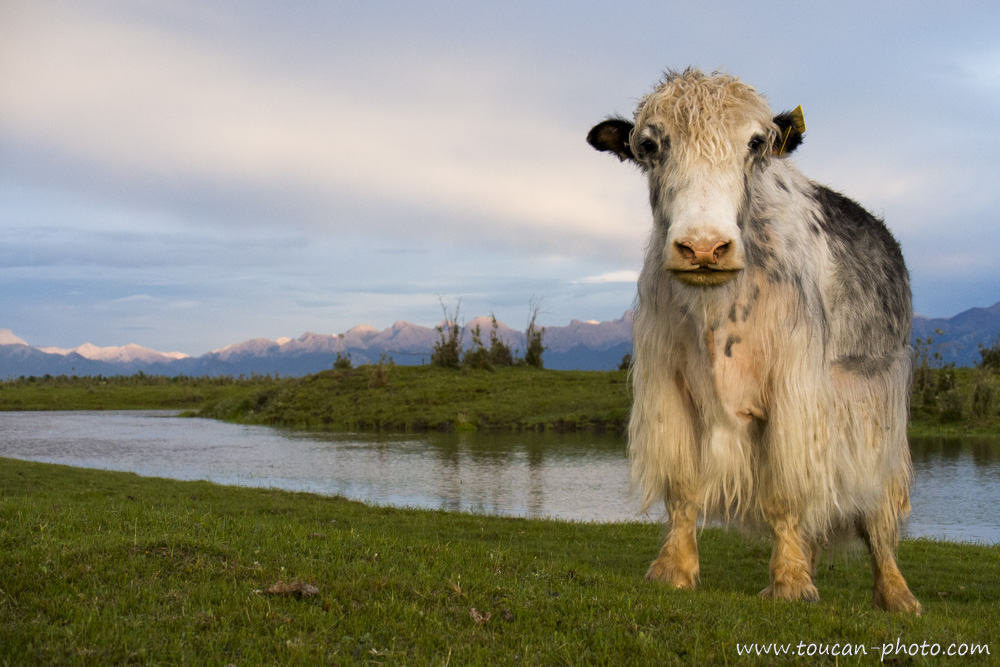 A Yak in the Darkhad valley
A Yak in the Darkhad valley
Due to the climate disruption of these last years, it is more and more difficult for the breeders to ensure the survival of their herds.
The “dzud“ are becoming more and more frequent. A “dzud“ is a climate phenomenon defined by an extremely rough winter. The temperatures can drop to -40°C or -50°C for months. Furthermore, if the raining falls are too heavy, the snowpack will be too thick to let the herds be able to reach the food. If this rough winter is followed by a scorching summer, the animals that cannot recover their stock of fat, die by thousands.
During winter 2009/2010, a severe “Dzuz” stricked the mongolian steppes, more than 8,5 millions head of cattles died, which is around 20% of mongolian herds.
The winter 2015/2016 was again very rough for animals. 858,100 cattles had already perished, on the 7th April 2016.
And now?
See more pictures from Mongolia
To read more on the Khövsgöl lake:
The Khövsgöl lake on Wikipedia (EN)
The official webpage of the Khuvsgul Aimag (EN)